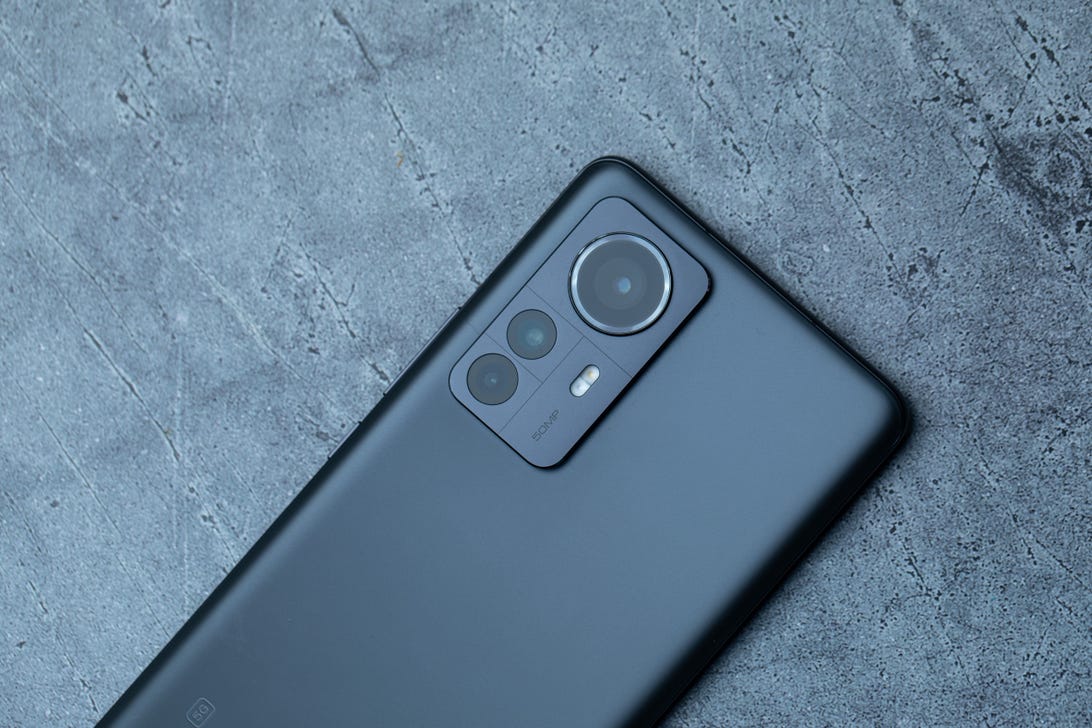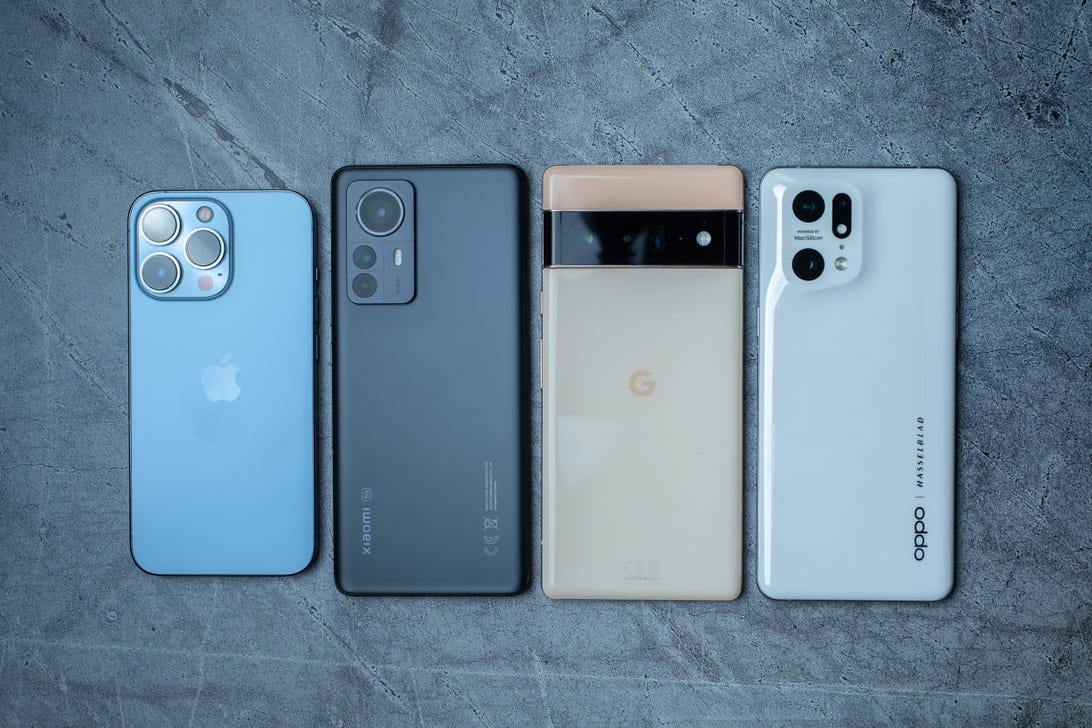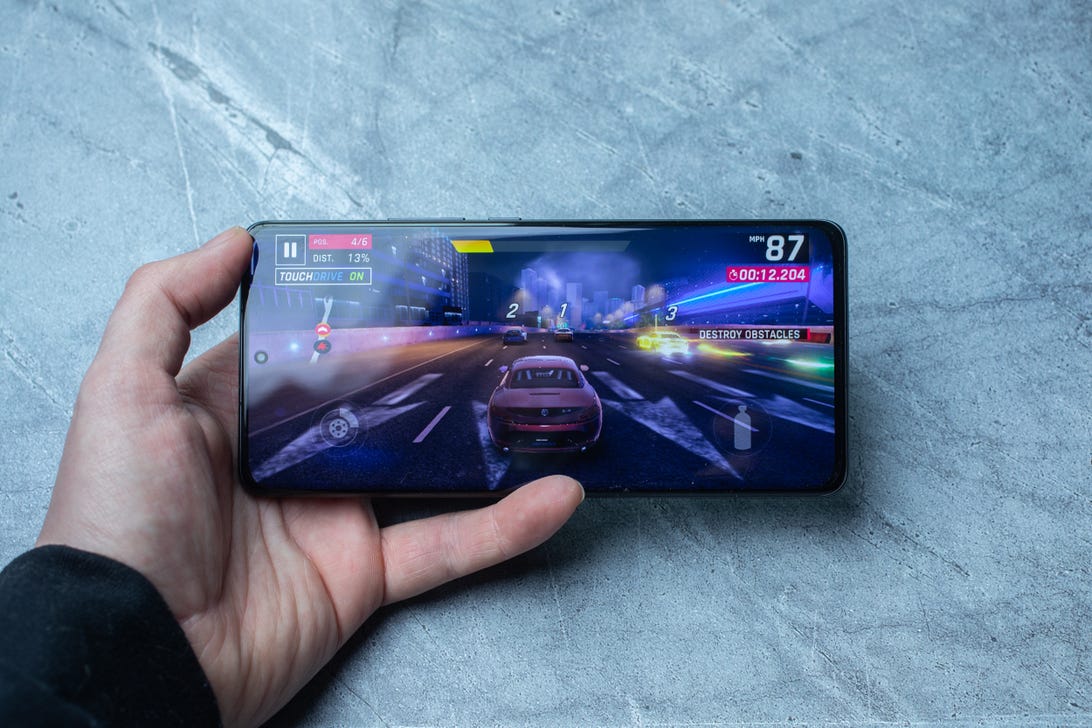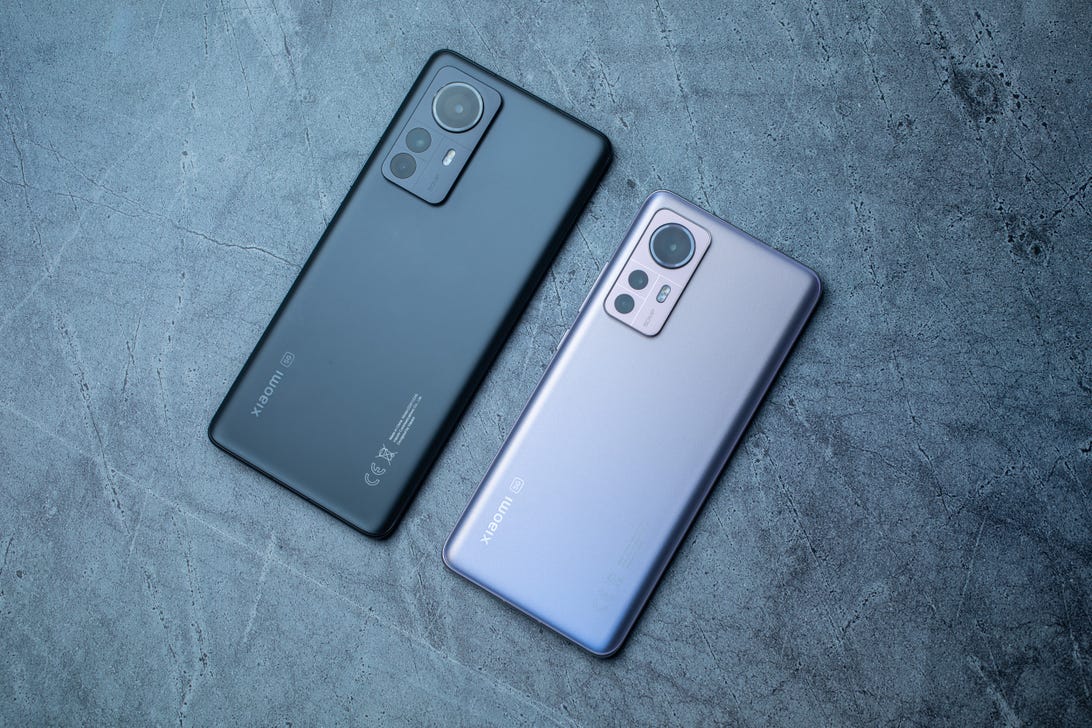
The Xiaomi 12 Pro — the latest flagship from the Chinese brand — is stuffed full of top tech, including the newest Snapdragon 8 Gen 1 processor and a 120-watt wired fast charger that claims a blisteringly fast recharge speed. Combined with a top-end camera, the 12 Pro offers strong competition to the likes of the iPhone 13 Pro, Google Pixel 6 Pro and Samsung Galaxy S22 Ultra, even if it’s a relatively unknown brand in the US. Having spent some time with the phone, there’s a lot I like about it, from its glorious screen and its wildly powerful processor to its solid camera.
The phone will go on sale later this month in the UK and Europe, and while US availability is yet to be confirmed, Xiaomi’s official pricing puts the phone as starting at $999 for the base model (with 8GB RAM and 128GB storage), or roughly £765 and AU$1,380 when converted. I’ve been testing the higher model, with 12GB RAM and a more generous 256GB of storage, although how much more that’ll set you back isn’t clear at the time of writing.
Post Contents
Xiaomi 12 Pro: An Android 12 Powerhouse You Might Not Have Considered
That price puts it squarely on par with the base iPhone 13 Pro, while sitting $200 under the S22 Ultra, making it a potentially solid option for those of you wanting a high-performance Android phone while still keeping some cash left in your bank account.
Humdrum design, beautiful display
Physically I don’t think the phone is particularly exciting to look at, at least in the gray color that my review model arrived in. It’s perfectly fine and if you usually use a case then it’s probably a moot point, but its plain frosted glass back and standard rectangle camera unit are a little uninspired. I’d at least opt for the purple or blue colors it’s also available in to add a bit of aesthetic appeal.
Still, it feels sturdy to hold, and it uses toughened Gorilla Glass Victus on the front and back so I’m confident it can take a few knocks without shattering into a million pieces. It doesn’t have an official IP waterproof rating (that I’ve been told so far, at least) so it’s worth keeping it especially safe when holding it near swimming pools, toilets or clumsy friends carrying beers. I’ve asked Xiaomi for clarification on waterproofing as this is a common feature on flagship phones and I’d hope to see this here.

Andrew Lanxon/CNET
On the front is a 6.73-inch AMOLED display which is both bright and vibrant. Its punchy colors will suit those of you who play a lot of colorful mobile games, while its 3,200×1,440-pixel resolution means that even tiny details are pin sharp. It has a 120Hz refresh rate too, making scrolling seem buttery smooth, but you can turn this down (or leave it on auto) in order to preserve battery life.
Solid camera
On the back you’ll find three 50-megapixel cameras: a standard zoom, a 2x telephoto zoom and an ultrawide camera. The main camera uses a 1/1.28-inch sensor which is physically larger than you’ll find on the iPhone 13 Pro. Larger sensors typically mean they can capture more light and therefore produce better looking shots.
So far in my testing I’ve found the 12 Pro’s images to be generally decent, but not outstanding. Colors are vibrant and exposure is fine, although the ultrawide lens sometimes overexposes some highlights in a scene.

Andrew Lanxon/CNET

Andrew Lanxon/CNET

Andrew Lanxon/CNET
The 2x zoom lens is good, but I’d like to have seen a longer zoom range — 5x or even up to the Galaxy S22 Ultra’s amazing 10x optical zoom. A longer zoom really opens up more interesting compositions that are still out of reach with a 2x lens.

Andrew Lanxon/CNET
That large main image sensor helps it take fairly bright, sharp images at night and I’d say that my test shots so far are pretty much on par with Android rivals such as the Pixel 6 Pro or the Oppo Find X5 Pro. It can shoot video at up to 8K resolution and you’ll find dedicated video effects, along with optical stabilization for smoother-looking handheld footage.

Andrew Lanxon/CNET
Huge power
Inside the phone is Qualcomm’s latest 5G-enabled Snapdragon 8 Gen 1 processor, backed up by a meaty 12GB of RAM on my review model. It’s an absolute powerhouse, achieving benchmark scores that comfortably outpace the Galaxy S22 Ultra, Pixel 6 Pro and Oppo Find X5 Pro.
While it’s important to remember that benchmarks are by no means a complete indicator of performance, the phone does feel extremely capable in everyday use. Navigating around the Android 12-based interface is swift and lag-free while playing demanding games like Asphalt 9: Legends and PUBG. It all looks incredibly smooth, with high frame rates at all times.

Andrew Lanxon/CNET
Good battery and fast charging
Inside the phone is a 4,600-mAh battery, which gets comfortably through a full day of mixed use. How much you tax your battery will always depend on your behavior, but if you’re checking email throughout the day, listening to podcasts and other general tasks, you’ll likely even have enough power to spare for the next day. Heavier use like spending the day filming 8K video and playing graphically intensive games will likely drain the battery fast enough to warrant charging in the afternoon.
But the phone’s incredibly speedy 120-watt fast charging is estimated by Xiaomi to fully recharge the phone from empty in around 18 minutes, hopefully making that afternoon boost pretty easy if you need it. I haven’t yet been able to test that claim as it requires a specific faster charger, which normally will come in the box but did not arrive with my review unit.

Andrew Lanxon/CNET
Cheaper, smaller Xiaomi 12
The 12 Pro is joined by the smaller Xiaomi 12. Beneath its 6.2-inch display is the same Snapdragon 8 Gen 1 processor, so you can expect similar blistering performance. The rear cameras have been pared down however, with a 50-megapixel main sensor, a 13-megapixel ultra wide and a 5-megapixel 2x telephoto.
It’ll come with a more affordable starting price of $749 and could be a good option if you want a high-performance phone in a smaller package.
Xiaomi 12, 12 Pro specs comparison chart
| Xiaomi 12 Pro | Xiaomi 12 | Galaxy S22 Ultra | |
|---|---|---|---|
| Display size, resolution | 6.73-inch AMOLED (3,200×1,440 pixels) | 6.28-inch AMOLED (2,400×1,080 pixels) | 6.8-inch AMOLED (1440×3088 pixels) |
| Pixel density | 521ppi | 419ppi | 501ppi |
| Dimensions (Millimeters) | 163.6 x 74.6 x 8.16 mm | 152.7 x 69.9 x 8.16 mm | 77.9 x 163.3 x 8.9 mm |
| Weight (Ounces, Grams) | 7.23 oz; 205g | 6.34 oz; 180g | 8.08 oz; 229 g |
| Mobile software | Android 12 | Android 12 | Android 12 |
| Camera | 50-megapixel (wide), 50-megapixel (ultra-wide) 50-megapixel (telephoto) | 50-megapixel (wide), 13-megapixel (ultra-wide) 5-megapixel (telephoto) | 108-megapixel (wide), 12-megapixel (ultra-wide) 10-megapixel (telephoto) 10-megapixel (telephoto) |
| Front-facing camera | 32-megapixel | 32-megapixel | 40-megapixel |
| Video capture | 8K | 8K | 4K |
| Processor | Snapdragon 8 gen 1 | Snapdragon 8 gen 1 | Snapdragon 8 gen 1 |
| RAM/Storage | 8GB + 128GB; 12GB + 256GB | 8GB + 128GB; 12GB + 256GB | 8GB + 128GB; 12GB + 256GB; 12GB+512GB; 12GB+ 1TB |
| Expandable storage | No | No | None |
| Battery/Charger | 4,600 mAh (120W fast charger bundled) | 4,500 mAh (67W fast charger bundled) | 5,000 mAh (45W wired charger) |
| Fingerprint sensor | In-display | In-display | In-display |
| Connector | USB-C | USB-C | USB-C |
| Headphone jack | No | No | No |
| Special features | 5G-enabled; 120Hz display; 120W fast charging; 50W wireless charging | 5G-enabled; 120Hz display; 67W fast charging; 50W wireless charging | 5G (mmw/Sub6), bundled S Pen, 100x Space Zoom (digital), 10x optical zoom, 47 W charging support |
| Price off-contract (USD) | $999 (128GB) | $749 (128GB) | $1,200 |
| Price (GBP) | TBA | TBA | £1,150 |
| Price (AUD) | TBA | TBA | AU$1,849 |